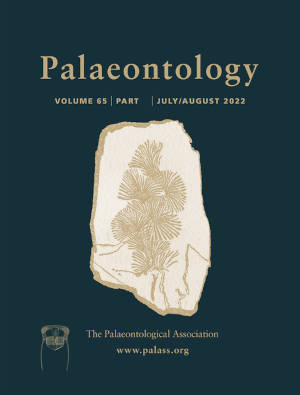Article: Postcrania of Borealestes (Mammaliformes, Docodonta) and the emergence of ecomorphological diversity in early mammals
Publication: Palaeontology
Volume:
65
Part:
1
Publication Date:
2022
Article number:
e12577
Author(s):
Elsa Panciroli, Roger B.J. Benson, Vincent Fernandez, Matthew Humpage, Alberto Martín-Serra, Stig Walsh, Zhe-Xi Luo, and Nicholas C. Fraser
Abstract
Abstract The Middle Jurassic witnessed the early diversification of mammal groups, including the stem-mammalian clade, Docodonta. Recent discoveries in China indicate docodontans exhibited ecomorphological diversity akin to small-bodied mammals living >100 million years later, in the Cenozoic. Our understanding of the emergence of this ecological diversity is hindered by a lack of Middle Jurassic fossil material from other parts of the world. The two partial postcranial skeletons of Borealestes described here come from the Kilmaluag Formation, Scotland. These are the most complete Mesozoic mammaliaform skeletons currently known from the UK, and among the best preserved in Europe. As an early member of Docodonta, Borealestes provides key anatomical information for understanding the clade’s evolution, and the emergence of mammaliaform ecomorphological diversity. Using digital reconstructions from micro-CT and synchrotron scans, we describe the postcranial anatomy of Borealestes and provide an updated phylogenetic analysis incorporating cranial and postcranial characters. We find Borealestes species form a sister group to a clade comprising Agilodocodon and Microdocodon. To complement observational analyses of the skeleton, we carry out principal components analyses using 3D landmarks on a comparative dataset of 42 extant mammal taxa. Our results indicate Borealestes lacked specializations for derived locomotor behaviour. We detect some similarity in the humerus between Borealestes and Ornithorhynchus. Borealestes is morphologically intermediate between the robust morphology of fossorial and semi-fossorial/semi-aquatic Haldanodon and Docofossor, and the gracile morphology for scansorial Agilodocodon and Microdocodon. We suggest ecological diversity in Docodonta may arise from an unspecialized basal bauplan, of which Borealestes may be representative.
